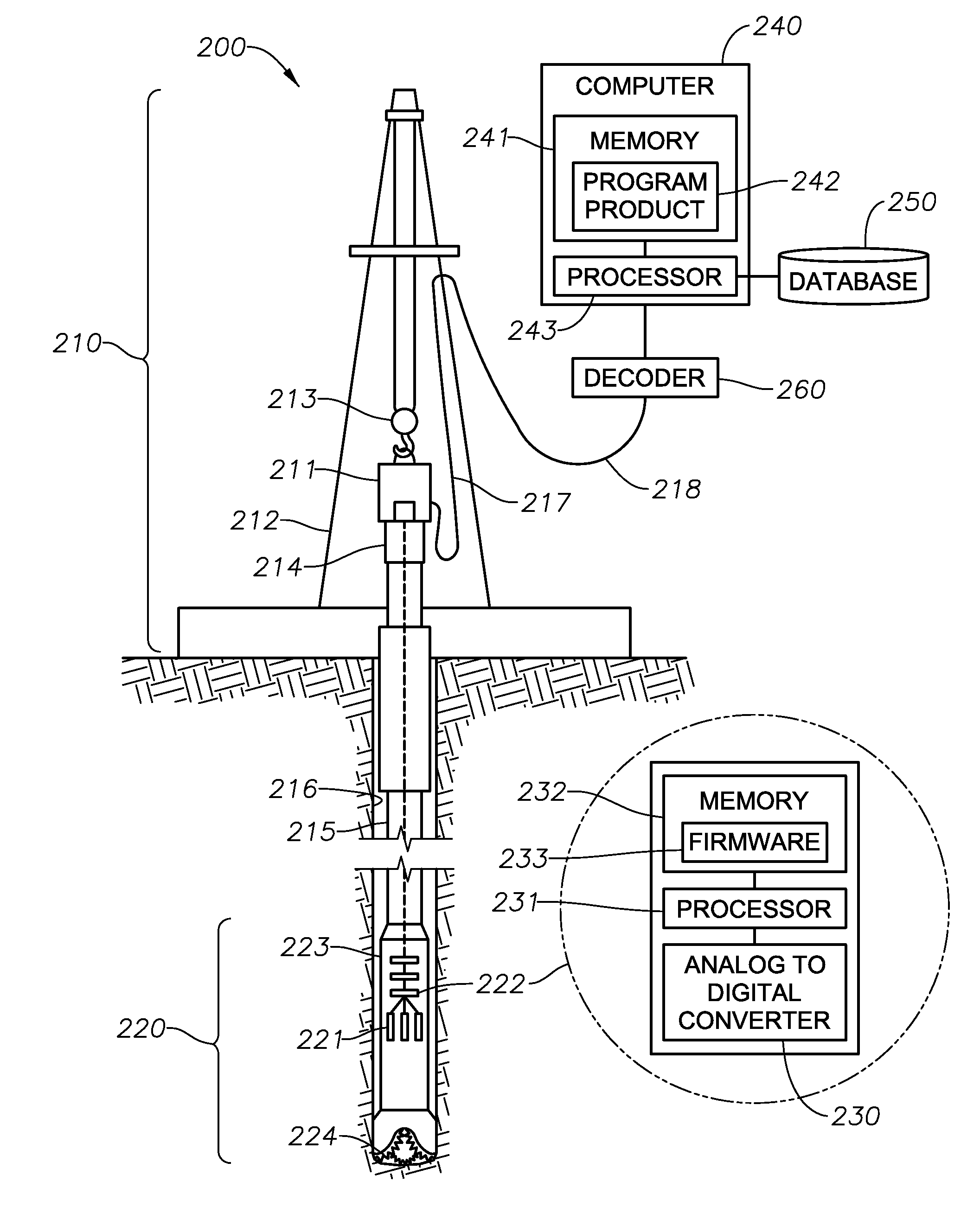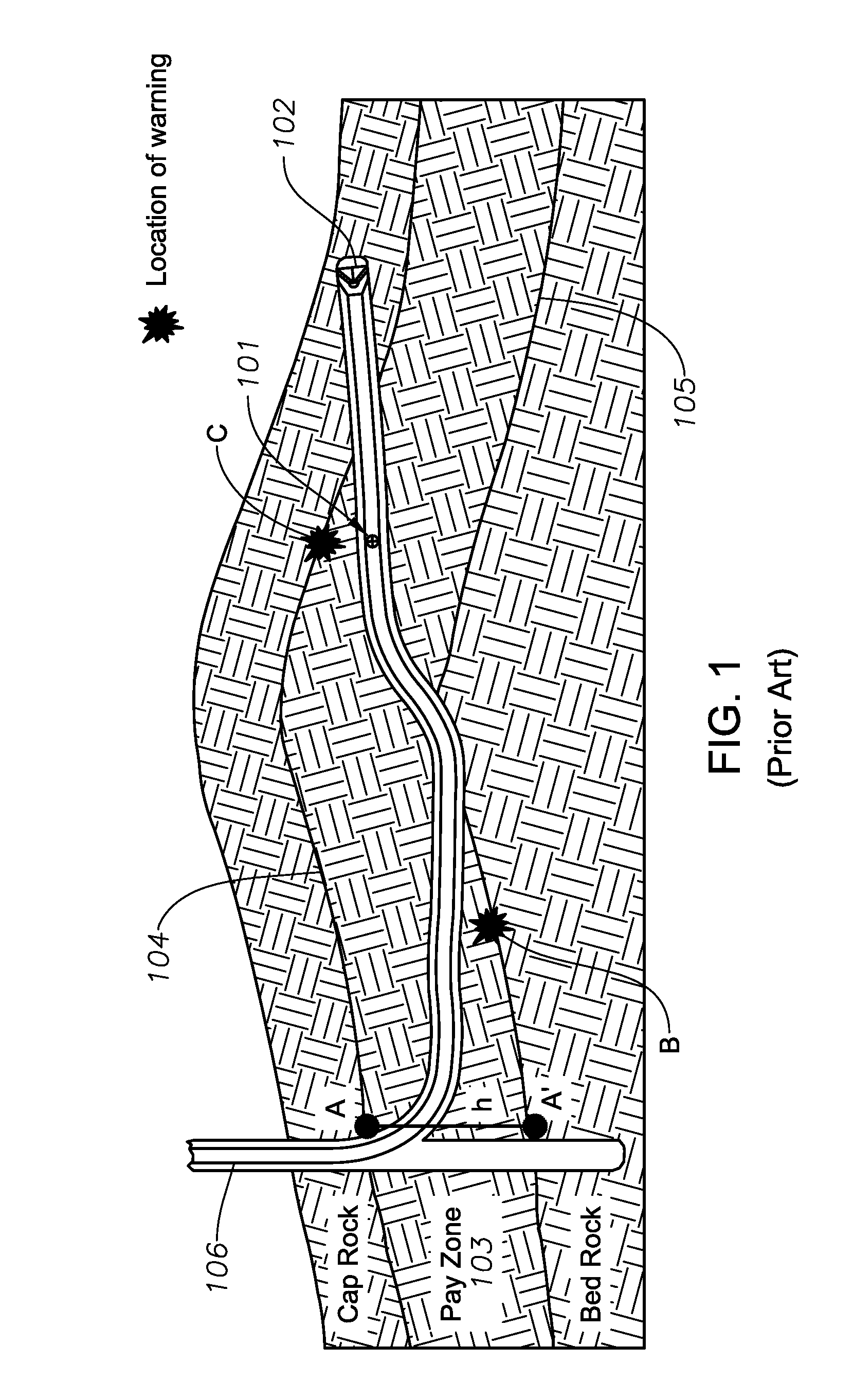Methods For Geosteering A Drill Bit In Real Time Using Drilling Acoustic Signals
a geosteering and drill bit technology, applied in the direction of surveying, directional drilling, borehole/well accessories, etc., can solve the problems of acoustic signals, normally derived geometry and distribution information of pay zones before drilling, and a significant error
- Summary
- Abstract
- Description
- Claims
- Application Information
AI Technical Summary
Benefits of technology
Problems solved by technology
Method used
Image
Examples
Embodiment Construction
[0031]The present invention will now be described more fully hereinafter with reference to the accompanying drawings, which illustrate embodiments of the invention. This invention may, however, be embodied in many different forms and should not be construed as limited to the illustrated embodiments set forth herein. Rather, these embodiments are provided so that this disclosure will be thorough and complete, and will fully convey the scope of the invention to those skilled in the art. Like numbers refer to like elements throughout. Prime notation, if used, indicates similar elements in alternative embodiments.
[0032]Generally, embodiments of the invention are directed to drill bit acoustic logging tools for vertically and laterally steering a drill bit. In particular, the tools employed use drill bit sounds (i.e., hereinafter referred to as “drilling acoustic signals”) generated by the drill bit drilling into rock to derive acoustic properties, lithology or rock types, and rock physi...
PUM
 Login to View More
Login to View More Abstract
Description
Claims
Application Information
 Login to View More
Login to View More - R&D
- Intellectual Property
- Life Sciences
- Materials
- Tech Scout
- Unparalleled Data Quality
- Higher Quality Content
- 60% Fewer Hallucinations
Browse by: Latest US Patents, China's latest patents, Technical Efficacy Thesaurus, Application Domain, Technology Topic, Popular Technical Reports.
© 2025 PatSnap. All rights reserved.Legal|Privacy policy|Modern Slavery Act Transparency Statement|Sitemap|About US| Contact US: help@patsnap.com



